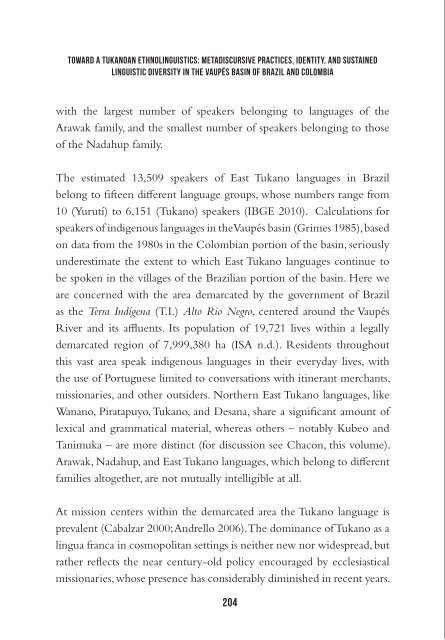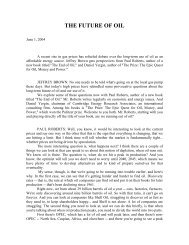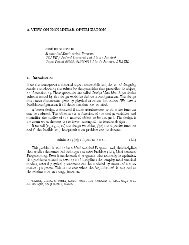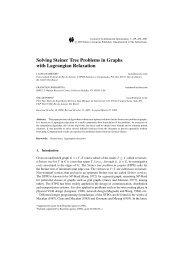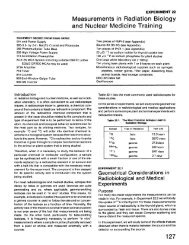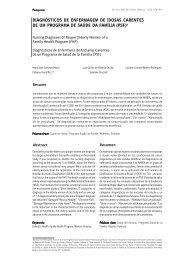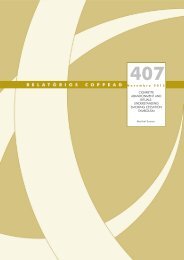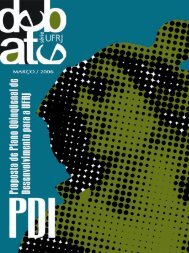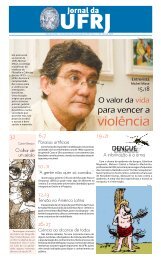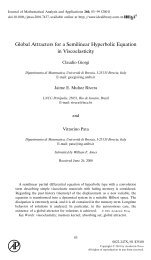Upper Rio Negro - Museu Nacional - UFRJ
Upper Rio Negro - Museu Nacional - UFRJ
Upper Rio Negro - Museu Nacional - UFRJ
You also want an ePaper? Increase the reach of your titles
YUMPU automatically turns print PDFs into web optimized ePapers that Google loves.
toward a tukanoan ethnolinguistics: metadiscursive practices, identity, and sustained<br />
linguistic diversity in the vaupés basin of brazil and colombia<br />
janet chernela<br />
with the largest number of speakers belonging to languages of the<br />
Arawak family, and the smallest number of speakers belonging to those<br />
of the Nadahup family.<br />
The estimated 13,509 speakers of East Tukano languages in Brazil<br />
belong to fifteen different language groups, whose numbers range from<br />
10 (Yurutí) to 6,151 (Tukano) speakers (IBGE 2010). Calculations for<br />
speakers of indigenous languages in the Vaupés basin (Grimes 1985), based<br />
on data from the 1980s in the Colombian portion of the basin, seriously<br />
underestimate the extent to which East Tukano languages continue to<br />
be spoken in the villages of the Brazilian portion of the basin. Here we<br />
are concerned with the area demarcated by the government of Brazil<br />
as the Terra Indígena (T.I.) Alto <strong>Rio</strong> <strong>Negro</strong>, centered around the Vaupés<br />
River and its affluents. Its population of 19,721 lives within a legally<br />
demarcated region of 7,999,380 ha (ISA n.d.). Residents throughout<br />
this vast area speak indigenous languages in their everyday lives, with<br />
the use of Portuguese limited to conversations with itinerant merchants,<br />
missionaries, and other outsiders. Northern East Tukano languages, like<br />
Wanano, Piratapuyo, Tukano, and Desana, share a significant amount of<br />
lexical and grammatical material, whereas others – notably Kubeo and<br />
Tanimuka – are more distinct (for discussion see Chacon, this volume).<br />
Arawak, Nadahup, and East Tukano languages, which belong to different<br />
families altogether, are not mutually intelligible at all.<br />
At mission centers within the demarcated area the Tukano language is<br />
prevalent (Cabalzar 2000; Andrello 2006). The dominance of Tukano as a<br />
lingua franca in cosmopolitan settings is neither new nor widespread, but<br />
rather reflects the near century-old policy encouraged by ecclesiastical<br />
missionaries, whose presence has considerably diminished in recent years.<br />
In two cases where languages have been lost, the survivors shifted to<br />
Tukano. The first of these were the Arapaso, whose violent encounters<br />
with Europeans in the nineteenth century resulted in extreme population<br />
decline and language loss (Chernela 1989; Chernela and Leed 2001,<br />
2003). The Arapaso adoption of Tukano a century ago is testimony to<br />
the prominence given that language in institutional settings, including<br />
boarding schools administered by the Salesian missionaries. The case calls<br />
into question the assertion that the dominance of the Tukano language<br />
is a recent phenomenon and proposes instead a slower, more long-term<br />
process. The second case is the Arawak Tariana, whose villages are closest<br />
to the principal mission centers of the Vaupés and who have long used<br />
the Tukano language as a means of communicating with East Tukano<br />
peoples throughout the river basin.<br />
The role of Tukano as a lingua franca and representative of other East<br />
Tukano languages was recently buttressed by the 2002 decision by the<br />
municipality of São Gabriel da Cachoeira (Law #145) making three<br />
indigenous languages co-official with Portuguese, the national language:<br />
Baniwa, Lingua Geral (Nheengatú, a Tupi-based trade language of<br />
the Brazilian Amazon) and Tukano. Increased migration out of the<br />
indigenous area to that city has created a new metropolitan context for<br />
the growing role of Tukano (Lasmar 2005).<br />
3. Anthropological Studies of Multilingualism in the <strong>Upper</strong> <strong>Rio</strong> <strong>Negro</strong><br />
An extensive literature has examined linguistic differentiation and<br />
language group exogamy among East Tukano-speaking groups. Irving<br />
Goldman first drew the attention of scholars to the area with his 1948<br />
publication in The Handbook of South American Indians (Goldman 1948).<br />
Twenty years later Arthur Sorensen (1967, 1973) identified thirteen<br />
204 205


